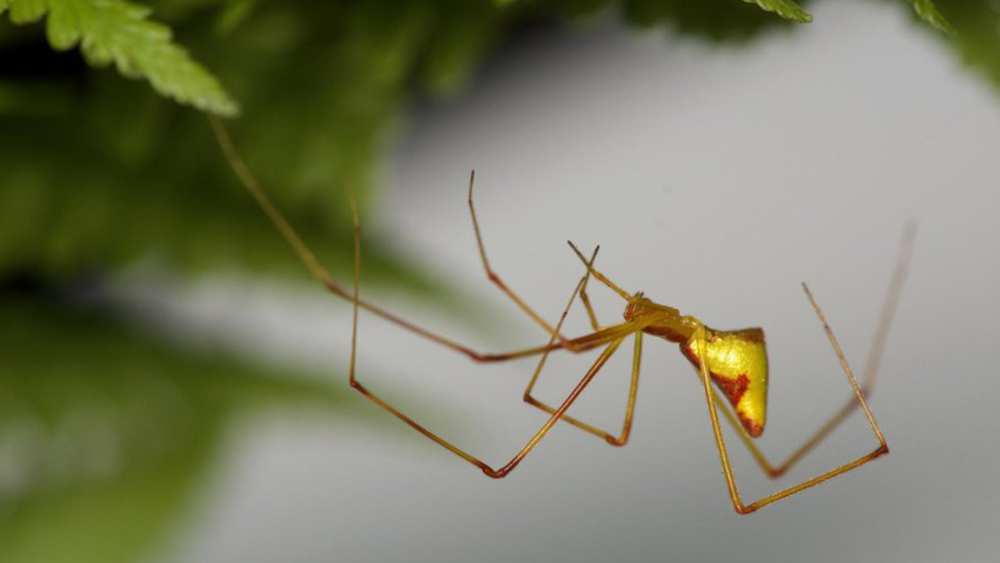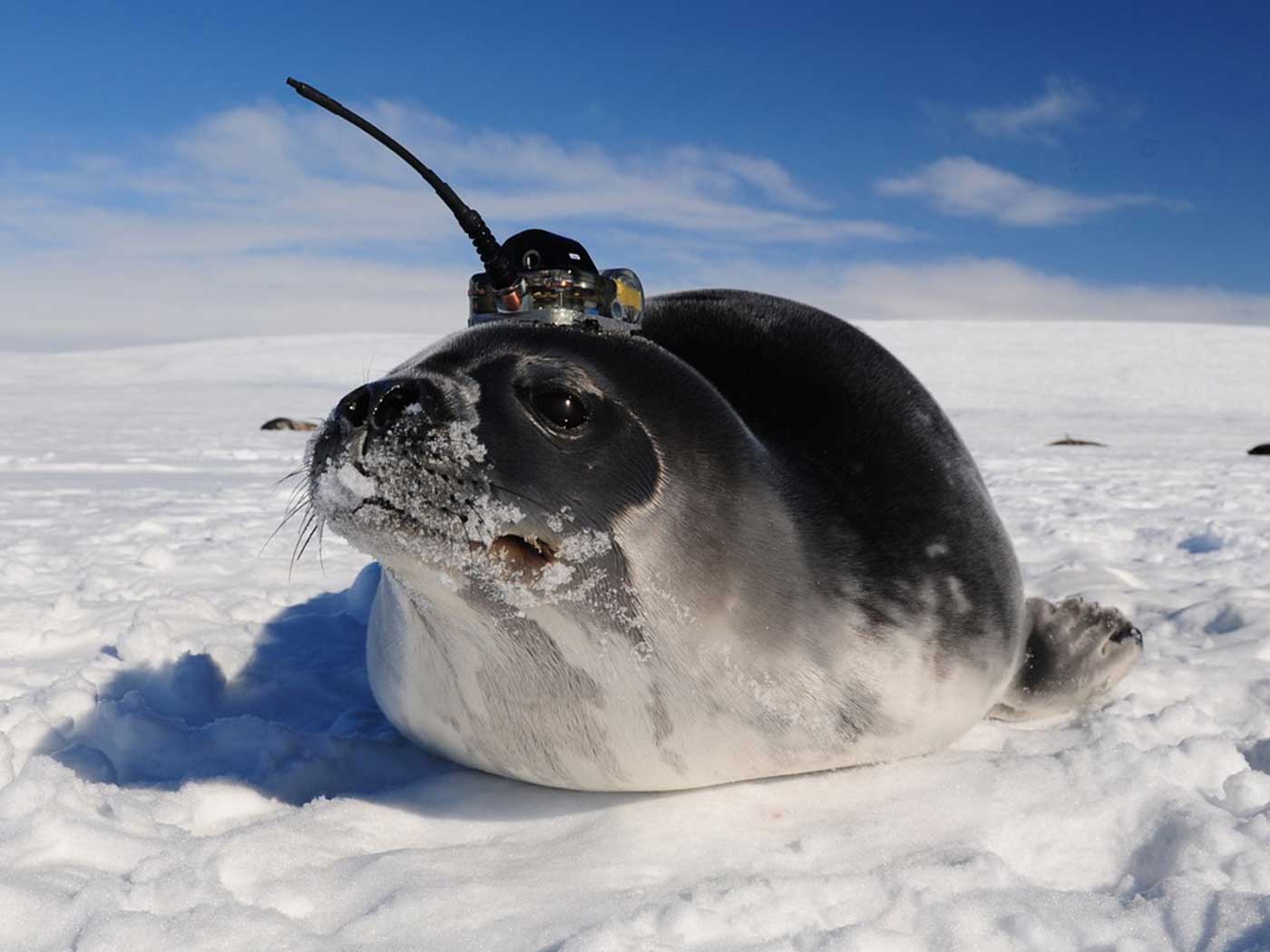A long-standing evolutionary argument is that creature diversity is essentially a random process. But new discoveries increasingly show serious flaws in this claim and are highly consistent with a design-based framework. The findings support the idea that adaptation is intensely purposeful. Science Daily reported one such find with the attention-catching title: Hawaiian stick spiders re-evolve the same three guises every time they island hop.1
Science Daily focused on an in-press article by Rosemary Gillespie, an evolutionary biologist at the University of California, Berkeley.2 Her team found that when stick spiders of the Ariamnes genus migrate between Hawaiian island forests on Kauai, Oahu, Molokai, and Maui, the spiders would predictably exhibit the same three coloration patterns suitable for their habitats. Dark spiders live among rocks or tree bark, glossy gold ones live under leaves, and lichens are inhabited by matte-white spiders. The intriguing observation was that “a dark spider that hops from an old island to a new one can diversify into new species of dark, gold, and white spiders before gold and white spiders from the old island have time to reach the new one.”
This means that new species on the same island—even though they look quite different—are more closely related to each other than to ones that look like them on other islands.
These specific repeatable adaptations seriously contradict the random results expected by evolutionary theory. ![]()
These specific repeatable adaptations seriously contradict the random results expected by evolutionary theory. Science Daily evoked surprise, “We don’t usually expect evolution to be predictable. But Hawaiian stick spiders of the Ariamnes genus have repeatedly evolved the same distinctive forms, known as ecomorphs, on different islands.”
Recently, ICR pointed out that when creatures purposefully adapt in repeatable and predictable ways, then this provides evidence for a design-based framework. Adaptation isn’t random.3
Two additional observations from the research support this conclusion. First, the development of these new spider species is quite rapid. Gillespie says that these spiders “arrive on an island, and boom! You get independent evolution to the same set of forms” which she depicts as “this sort of rapid and repeated evolution.”
Second, the mechanism for speciation does not appear to be random mutations parsed out among species through a struggle to survive. Rather, Gillespie thinks “that the Ariamnes spiders have some sort of preprogrammed switch in their DNA that can be quickly turned on to allow them to evolve rapidly into these successful forms. But how that process might work is still unclear.” A “preprogrammed switch” must, by definition, be programmed, i.e., designed into the DNA itself before any trait changes occur.
But in her paper for Current Biology, Gillespie and her team write, “We can ask whether there might be an underlying mechanism that leads to the similar patterns of predictably repeated evolution in the course of adaptive radiation.”4 Which they indicate is happening through “parallel developmental and genetic systems.” Unfortunately, Gillespie’s team reports no further investigations to explain specific adaptations to environmental niches. Instead of researching deeper into the casual issues, they are content to invoke the metaphor of selective pressure saying, “diurnal predation is the most likely selective pressure responsible for the close color matching.”
Suppose that research wasn’t distracted by the metaphor of “selective pressure.” Perhaps innate mechanisms—that are still awaiting full description by researchers—enable organisms to track environmental changes which are expressed in the coloration of these spiders.
However, from a genetic standpoint, all of the species on all of the islands are very similar genetically despite their different appearances. Other mechanisms (i.e., genetic markers, known as epigenetics) have been shown to allow organisms to express rapid phenotypic flexing in response to different conditions.5
Isn’t it reasonable to investigate whether these spiders may have innate sensors for environmental conditions, and similar internal if-then logic mechanisms controlling the expression of specific genes during embryonic development and as adults, so that they repeatedly produce similar responses which fit certain niches? The result is the expression of specific traits enabling these creatures to tightly and rapidly follow environmental conditions which is consistent with the Continuous Environmental Tracking model proposed by ICR.
By applying engineering causality to several examples, thinking and research is liberated from the mysticism of “selection pressure” to see creatures actively tracking environmental changes.
References
- Staff Writer. Hawaiian stick spiders re-evolve the same three guises every time they island hop. Science News. Posted on sciencedaily.com March 8, 2018, accessed March 9, 2018.
- Gillespie, R. G. et al. 2018. Repeated Diversification of Ecomorphs in Hawaiian Stick Spiders. Current Biology. 28 (6): 941-947. DOI: 10.1016/j.cub.2018.01.083.
- Guliuzza, R. J. 2017. Engineered Adaptability: Arriving at a Design-Based Framework for Adaptability. Acts & Facts. 46 (8): 17-19.
- Gillespie, et al., 5.
- Guliuzza, R. J. 2018. Engineered Adaptability: Engineered Adaptability: Epigenetics—Engineered Phenotypic ‘Flexing.’ Acts & Facts. 47 (1): 17-19.
Stage Image: Golden Ariamnes spider.
Stage Image Credit: George Roderick © 2018. Used in accordance with federal copyright (fair use doctrine) law. Usage by ICR does not imply endorsement of copyright holder.
*Randy Guliuzza is ICR’s National Representative. He earned his M.D. from the University of Minnesota, his Master of Public Health from Harvard University, and served in the U.S. Air Force as 28th Bomb Wing Flight Surgeon and Chief of Aerospace Medicine. Dr. Guliuzza is also a registered Professional Engineer.























